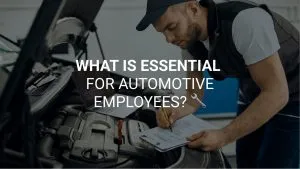From Vehicle Mechanic to Electric Vehicle Diagnostician: Your Guide to Hybrid Repair, EV Training & Diagnostics in the UK
 25.08.2025
25.08.2025
 6 mins to read
6 mins to read

The UK’s automotive industry is undergoing one of the most significant transitions in its history. Battery electric vehicles (BEVs) are no longer a niche segment. They claimed a record 19.6% share of new registrations in 2024 (SMMT), and their presence in workshops is consistently growing. The transformation is being driven by government policy, emissions targets, and a growing acceptance among consumers that the future of transport will be electric.
For workshop professionals, this shift brings both opportunity and urgency. The skills needed to service and repair internal combustion engine (ICE) vehicles are not the same as the skills needed to repair the high-voltage, software-heavy world of EVs. Without the right qualifications, technicians will be unable to work legally and safely on these vehicles. Manufacturers are also aware of this challenge. In today’s article, we will explore the complexities and challenges that mechanics face when retraining to become EV diagnosticians in the UK.
Why EV Diagnostics Requires a Different Skill Set? Testing and Repair of Electric and Hybrid Vehicles.
An ICE mechanic is already familiar with electrical systems such as alternators, starters, and low-voltage wiring. However, an EV’s architecture is fundamentally different. High-voltage battery packs, regenerative braking systems, and complex software require not just new knowledge, but also a completely different approach to safety.
The UK’s Health and Safety Executive (HSE) has issued clear guidance for working on electric and hybrid vehicles. It emphasizes the need for strict isolation procedures, ‘prove dead’ testing, and adherence to manufacturer-specific repair instructions (HSE). With such high technological advancement as the EVs, even a small oversight can be dangerous. One of the reasons is that battery packs retain potentially lethal energy even when disconnected.
It is, therefore, no surprise that to transition into an EV diagnostician role, a mechanic needs to master several new competencies, such as:
- Safe working practices for systems operating at over 600V
- Diagnosis and repair of battery management systems (BMS)
- Understanding of inverters, converters, and electric drivetrains
- Use of OEM diagnostic tools for software-based fault finding
- Awareness of ADAS calibration requirements in EVs (IMI)
By developing these skills, a technician moves from basic EV servicing into advanced diagnostic work. Identifying faults requires in-depth analysis of both hardware and software.
Recognised training routes and qualifications
Luckily, the UK has developed a clear framework for retraining mechanics in EV technology. The Institute of the Motor Industry (IMI) prepared a suite of nationally recognised qualifications, such as introductory awareness courses or advanced high-voltage system diagnostics. Additionally, there are options from City & Guilds and government-funded schemes like Skills Bootcamps.
| Qualification / Scheme | Level | Duration | Typical Cost |
| IMI Level 1–4 EV & Hybrid Awards | 1–4 | 1–5 days | £100–£650 |
| IMI TechSafe Recognition | N/A | Ongoing CPD | Varies |
| City & Guilds EV Charging Installation (2921) | N/A | Variable | £400–£1,000 |
| Skills Bootcamps in EV Technology | N/A | 2–16 weeks | Free (funded) |
| Motor Vehicle Apprenticeship | 3 | 2–3 years | Funded |
The IMI’s TechSafe recognition is especially valuable. Apart from demonstrating competence to employers, it also places a technician on a public register. Thanks to that, customers can easily find qualified EV professionals.
A typical EV training journey: how to become a certified EV technician
The pathway from ICE mechanic to EV diagnostician can be surprisingly short in terms of formal training time. However, as with any trade, on-the-job practice remains essential. Many begin with an IMI Level 2 hazard management course. This path provides the knowledge needed to work safely around high-voltage systems. Then, one may follow with an IMI Level 3 award in EV system repair and replacement. This will equip the technician for most routine maintenance tasks.
The IMI Level 4 qualification is the gold standard to work on live high-voltage systems and carry out complex fault-finding. This qualification includes diagnosing battery issues, testing high-voltage circuits, and dealing with integrated vehicle control systems. Formal training is only a minimum for technicians to complete. Many professionals also complete OEM-specific courses that grant access to proprietary diagnostic software and repair manuals. These are essential to work with certain brands and models.
Time of training courses and cost considerations
Speaking of the appropriate qualifications, one must definitely consider two factors: time and cost. However daunting and problematic these two factors might be, the financial and time investment for EV retraining is relatively modest compared to the potential career benefits. One-day hazard awareness courses often cost between £100 and £400 (Continental). An IMI Level 3 award typically costs £300–£600 and can be completed in two to three days (IMI). The advanced IMI Level 4 course requires around 30 hours and is priced at approximately £650 (Blackburn College).
When government-funded Skills Bootcamps are available, eligible learners can complete electric vehicle training at no personal cost. Apprenticeships, meanwhile, offer an employer-funded route that combines work experience with structured learning. However, the duration of these is longer.
The road ahead for UK technicians
The shift to EVs is more than just a technological challenge. It is a chance for mechanics to secure the future of their careers. The UK faces a shortfall of qualified EV technicians. Therefore, those with high-voltage and diagnostic skills are increasingly valuable. Employers are recognising this by offering paid training, covering course fees, or scheduling work to accommodate study.
For a motivated mechanic, the journey to becoming an EV diagnostician can take weeks rather than years. Starting with safety certification, building up through IMI qualifications, and gaining hands-on experience with real vehicles can open the door to better pay, broader job opportunities, and a secure place in a rapidly evolving industry.
The transition from spanners and spark plugs to high-voltage probes and diagnostic software is not just possible. It is happening now. Those who embrace it will be at the forefront of the automotive trade for decades to come.
Sources:
https://www.smmt.co.uk/record-ev-market-share-but-weak-private-demand-frustrates-ambition/
https://www.hse.gov.uk/mvr/topics/electric-hybrid.htm
https://tide.theimi.org.uk/learn/qualifications/electric-vehicle-qualifications
https://publications.parliament.uk/pa/cm201719/cmselect/cmbeis/1881/188102.htm
https://www.gov.uk/guidance/bid-to-supply-skills-bootcamps
https://tide.theimi.org.uk/membership/imi-techsafe
https://find-employer-schemes.education.gov.uk/schemes/skills-bootcamps
https://www.gov.uk/apply-apprenticeship
https://www.continental-aftermarket.com/gb-en/product-support/training-courses/ev-trainings






